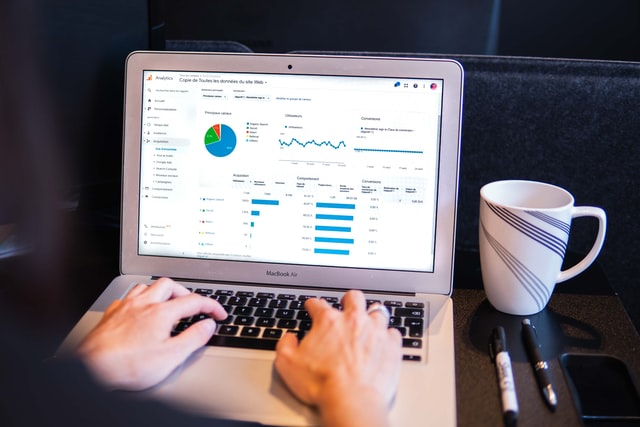
Optimizing your eCommerce store for performance
Optimizing your eCommerce store for performance is essential to ensure a smooth and positive buying experience for your customers. By following some simple tips, you can dramatically improve the speed and reliability of your store, leading to increased sales and a better reputation.
This article will discuss some of the most important ways to optimize your eCommerce store for performance. We will cover everything from optimizing your hosting plan to reducing the size of your images. Read on to learn more!
Importance of eCommerce Performance Optimization
As an online business owner, you know that speed and performance are critical factors for success. Research has shown that nearly half of all online shoppers will leave a website if it takes more than four seconds to load.
This means that if your eCommerce store is not performing well, you are likely losing out on many sales. Therefore, to compete in today's marketplace, it is essential to ensure that your store is running as efficiently as possible.
Benefits
By optimizing your eCommerce store through Magento development services for performance, you can expect to see several benefits, including:
-
Increased sales
When your eCommerce store is running smoothly, customers will be more likely to complete a purchase. A faster, more reliable store will encourage customers to stick around and buy more products.
-
Improved customer satisfaction
A poor shopping experience can lead to negative feedback and lost customers. A smooth, fast buying experience is key to customer satisfaction. Optimizing your online store with the help of an Adobe partner for performance will ensure that customers have a positive experience, resulting in happier customers and better reviews.
-
Reduced costs
A poorly performing eCommerce store can lead to higher hosting costs and lost sales. A fast and efficient store requires less bandwidth and results in lower hosting costs. By optimizing your store for performance, you can reduce the load on your server, leading to reduced hosting costs and improved website speed.
-
Enhanced brand reputation
A well-performing store reflects positively on your business and can help you attract new customers. A slow, unreliable store will give your business a bad reputation and may deter potential customers from doing business with you.
-
User Experience
A fast, smooth UI/UX design is essential for a successful eCommerce store. By optimizing your store for performance, you can ensure that customers have a positive experience, resulting in increased sales and a better reputation.
How to optimize your eCommerce store for performance?
Now that we have covered the importance of eCommerce performance optimization, let's look at some of the best ways to achieve it.
Fortunately, optimizing your eCommerce store for performance is not a difficult task. By following the tips outlined in this article, you can optimize your eCommerce store. Let's get started!
1. Optimize your hosting plan
One of the most important steps you can take to improve your store's performance is to optimize your hosting plan. If you are currently on a shared hosting plan, you may want to consider upgrading to a VPS or dedicated server. This will give you more resources and better performance for your store.
2. Use a content delivery network (CDN)
A CDN is another essential tool for optimizing the performance of your eCommerce store. A CDN will cache your images and other static content on servers all around the world, which will then serve this content to your customers faster and more reliably.
3. Optimize your images
One of the most significant contributors to slow page load times is large images. However, you can reduce the size of your images without sacrificing quality by using a tool like Photoshop or ImageOptim.
4. Minimize HTTP requests
HTTP requests are the individual requests that your browser makes to load a web page. You can minimize the number of HTTP requests by combining files into CSS and JavaScript files and by using images with the correct dimensions.
5. Use a caching plugin
A caching plugin will store a copy of your pages and images in the browser, which will be served faster the next time the page is loaded. This can dramatically improve the performance of your store.
6. Enable compression
Compressing your pages and images can reduce their size by up to 70%, resulting in faster page load times. You can enable compression by adding the following code to your .htaccess file:
<IfModulemod_deflate.c>
AddOutputFilter DEFLATE html
</IfModule>
7. Optimize your database
The MySQL database is a common bottleneck for eCommerce stores. You can optimize your MySQL database by following these tips:
- Use InnoDB as your storage engine
- Keep your database tables slim
- Use indexes to speed up queries
- Remove unnecessary data from your database
Conclusion
eCommerce conversion optimization is a process that can be used to increase the number of visitors who take the desired action on your site, such as making a purchase. Many factors can impact conversion rates, including website design and development, layout, usability, copywriting, and marketing. By optimizing your eCommerce performance, you can improve your sales and grow your business. Websites should continually test and measure their conversions to find ways to improve them.
If you require eCommerce Performance Optimization for your company, feel free to contact us. Do check out our other blogs if you want to gain more insights regarding website development. And as always, thank you for reading till the end.


